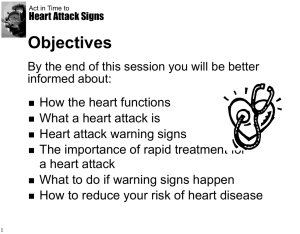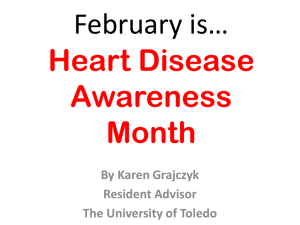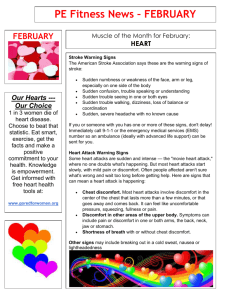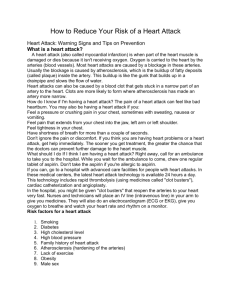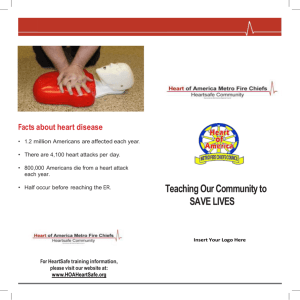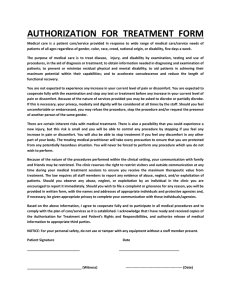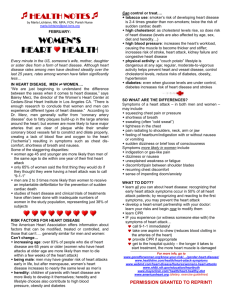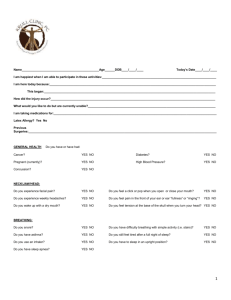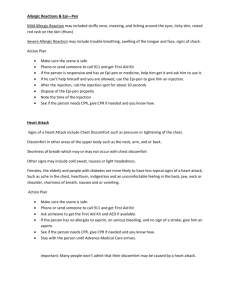Who Is At Risk Many people think that heart attacks are a “man`s
advertisement
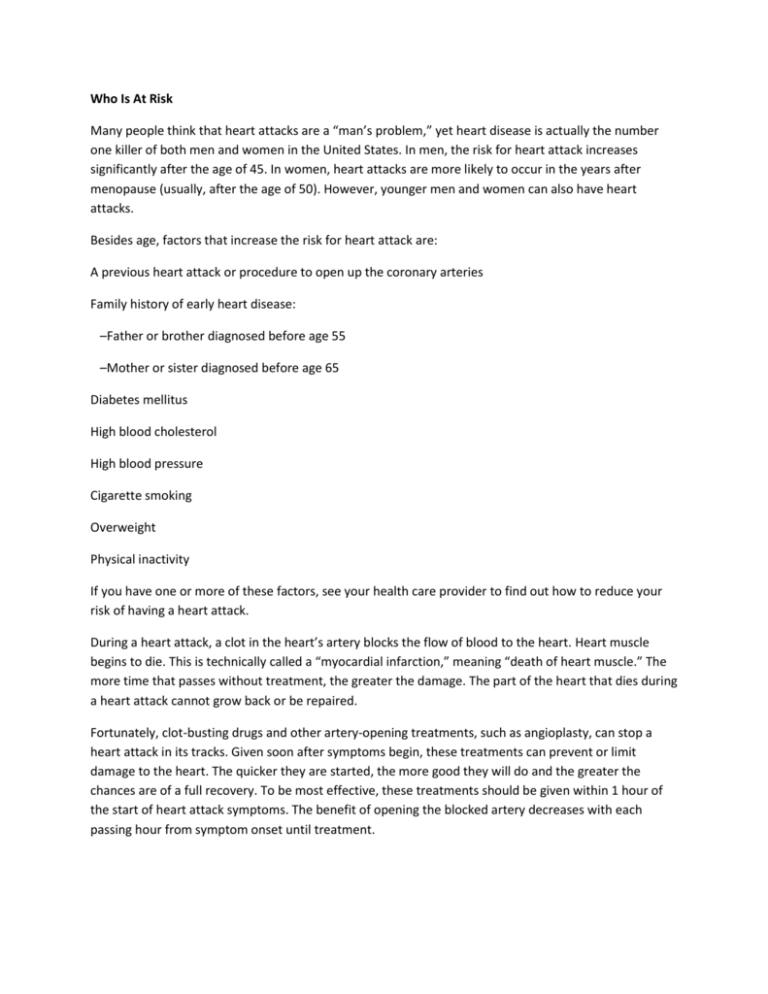
Who Is At Risk Many people think that heart attacks are a “man’s problem,” yet heart disease is actually the number one killer of both men and women in the United States. In men, the risk for heart attack increases significantly after the age of 45. In women, heart attacks are more likely to occur in the years after menopause (usually, after the age of 50). However, younger men and women can also have heart attacks. Besides age, factors that increase the risk for heart attack are: A previous heart attack or procedure to open up the coronary arteries Family history of early heart disease: –Father or brother diagnosed before age 55 –Mother or sister diagnosed before age 65 Diabetes mellitus High blood cholesterol High blood pressure Cigarette smoking Overweight Physical inactivity If you have one or more of these factors, see your health care provider to find out how to reduce your risk of having a heart attack. During a heart attack, a clot in the heart’s artery blocks the flow of blood to the heart. Heart muscle begins to die. This is technically called a “myocardial infarction,” meaning “death of heart muscle.” The more time that passes without treatment, the greater the damage. The part of the heart that dies during a heart attack cannot grow back or be repaired. Fortunately, clot-busting drugs and other artery-opening treatments, such as angioplasty, can stop a heart attack in its tracks. Given soon after symptoms begin, these treatments can prevent or limit damage to the heart. The quicker they are started, the more good they will do and the greater the chances are of a full recovery. To be most effective, these treatments should be given within 1 hour of the start of heart attack symptoms. The benefit of opening the blocked artery decreases with each passing hour from symptom onset until treatment. Learn the Signs Many people think that a heart attack is sudden and intense, like the “Hollywood” heart attack depicted in the movies, where a person clutches his or her chest and falls over. The truth is that many heart attacks start as a mild discomfort in the center of the chest. Someone who feels such a warning may not be sure what is wrong. The discomfort (and other symptoms) may even come and go. Even people who have had a heart attack may not recognize the signs, because the next one can have entirely different symptoms. The warning signs of a heart attack are shown in the box below. Learn them, but also remember: Even if you’re not sure it’s a heart attack, you should still check it out promptly. Heart Attack Warning Signs Chest discomfort. Most heart attacks involve discomfort in the center of the chest that lasts for more than a few minutes or that goes away and comes back. The discomfort can feel like uncomfortable pressure, squeezing, or fullness. Discomfort in other areas of the upper body. Symptoms can include discomfort in one or both arms or in the back, neck, jaw, or stomach. Shortness of breath. This symptom often accompanies chest discomfort. However, it can also occur before the chest discomfort. Other signs. These may include breaking out in a cold sweat, nausea, or light-headedness. Some patients report a sense of impending doom. Call 9-1-1 Timing is everything. People who experience the warning signs of a heart attack often deny how serious the situation is and take a wait-and-see approach. But time is very important, and anyone with these warning signs needs to get medical evaluation and treatment right away. Don’t wait more than a few minutes—5 minutes at most—to call 9-1-1. By calling 9-1-1 and taking an ambulance you will get to the hospital in the fastest way possible. There also are other benefits to calling 9-1-1: Emergency personnel can begin treatment immediately—even before you arrive at the hospital. Your heart may stop beating during a heart attack. Emergency personnel have the knowledge and equipment needed to start it beating again. Heart attack patients who arrive by ambulance tend to receive faster treatment on their arrival at the hospital. Note: If you are having heart attack symptoms and for some reason cannot call 9-1-1, have someone else drive you at once to the hospital. Never drive yourself unless there is absolutely no other choice. Questions You Will Likely Be Asked in the Emergency Department When you get to the emergency department, you should be ready to answer, as best as you can, the following questions about your symptoms: What time did your discomfort begin? What were you doing when your discomfort began? Was it at its most intense level immediately or did it gradually build up to a peak? Did you notice any additional symptoms in association with the discomfort, such as nausea, sweating, lightheadedness, or palpitations? On a scale of 1 to 10 with 10 being the worst, what number would you use to describe your discomfort at this time? Your answers to these questions will help the doctor give you the best possible care and make you a partner in your care. Tests to See if You Are Having A Heart Attack Electrocardiogram (ECG or EKG). This is a graphic record of the electrical activity of the heart as it contracts and rests. It can often detect areas of damage, inadequate blood flow, heart enlargement, and abnormal heartbeats. The ECG does not always show the damage that is occurring, particularly if it involves the left side or back walls of the heart. In such cases, blood tests or other studies that can “image” the heart’s blood flow are used. Blood tests. Blood tests are often used to check for “biochemical markers” that are released into the blood within the first few hours after heart damage occurs. In some cases, some of these blood tests can identify “high risk” conditions in which a heart attack may be imminent. Nuclear scan. This is sometimes used to show damaged areas of the heart and reveal problems with its pumping action, which is particularly helpful in cases where the ECG does not detect the damage. A small amount of radioactive material is injected into a vein, usually in the arm. A scanning camera positioned over the heart records the nuclear material, which is delivered by the coronary arteries and either taken up by the heart muscle (healthy areas) or not taken up (damaged areas). In particular cases, the camera can also evaluate how the heart muscle as a unit pumps the blood. This test can be done during both rest and exercise. Coronary angiography (or arteriography). This test is used to take detailed pictures of the coronary arteries. A fine tube (catheter) is threaded through an artery of an arm or leg up into the heart. A fluid that shows up on x-ray is then injected, and the heart and blood vessels are filmed as the heart pumps. The picture is called an angiogram or arteriogram. It can show problems such as a blockage caused by atherosclerosis. Remember: Don’t Delay The best way to find out if symptoms are due to a heart attack is to get them checked at a hospital emergency department. In a heart attack, every minute that passes causes more of the heart muscle to die. You can save a life— your own or someone else’s—by calling 9-1-1 right away. Doctors and emergency personnel want anyone who may be having a heart attack to come to the emergency department without delay, even if the symptoms turn out to be a false alarm. Plan Ahead Make a plan now for what you would do if a heart attack should happen. It will save time and could help save a life. To plan ahead: Learn the heart attack warning signs listed in this article. Talk to your doctor about your heart attack risk and what you can do to reduce it. Ask specifically about aspirin and the use of nitroglycerin. Talk with your doctor, family members, friends, and coworkers about the heart attack warning signs and the importance of acting fast. Discuss the benefits of calling 9-1-1 instead of going to the hospital by car. Knowing what to do if a heart attack occurs could save your life or theirs.
